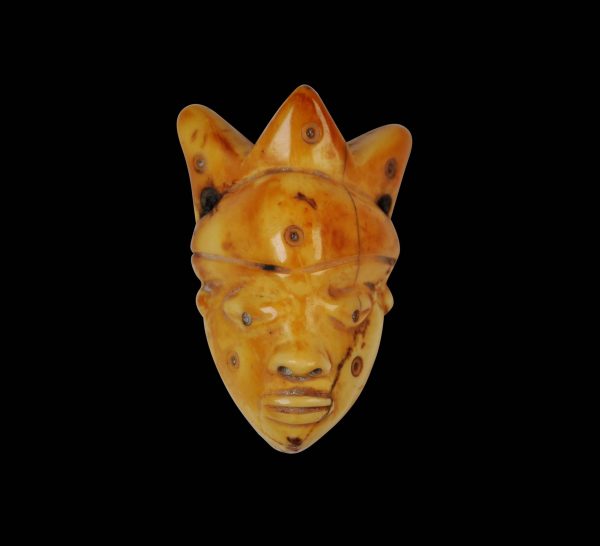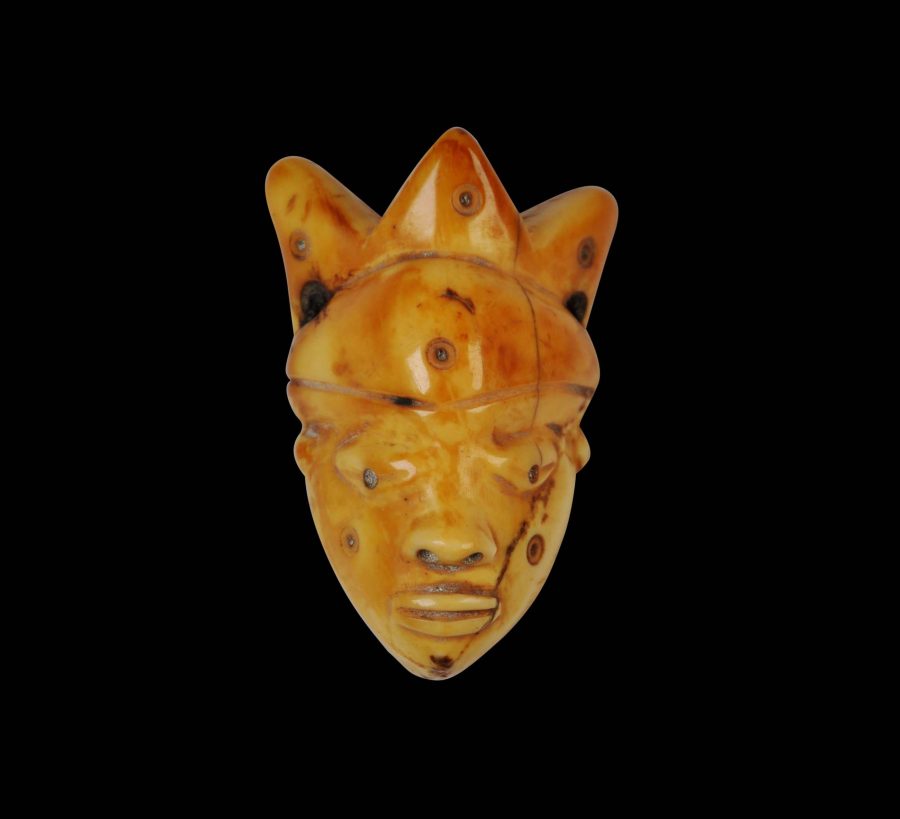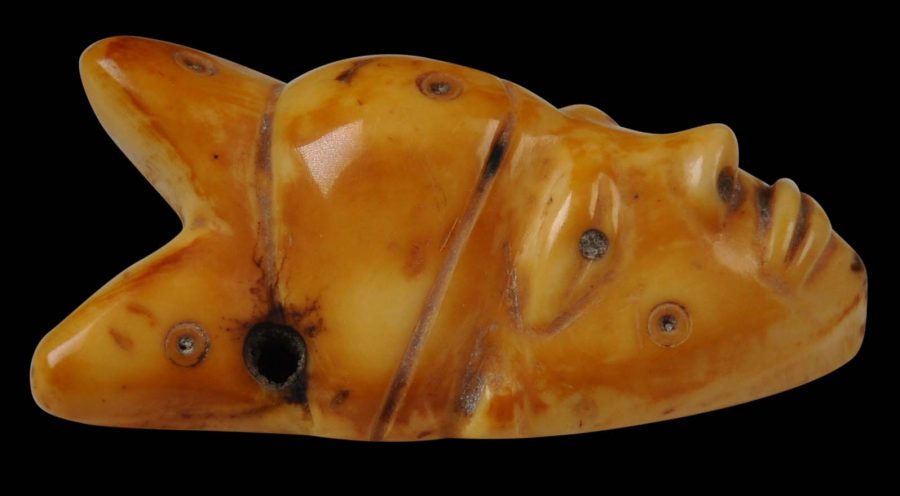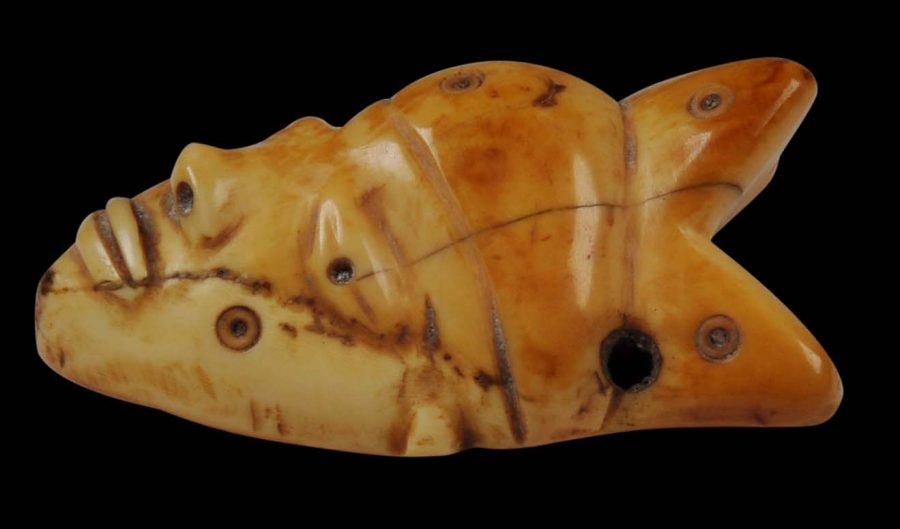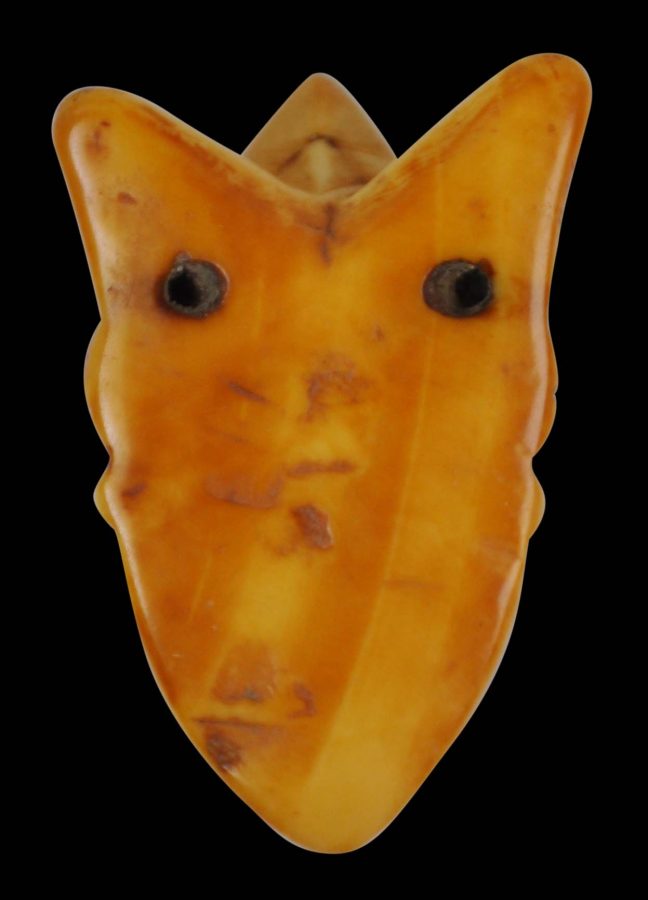This pendant is notable for its age and superb wear and patina. It has excellent feel in the hand with its contours having been worn smooth by wear and use. It is among the best examples we have seen on account of its age, fine reddish colour and patina.
This type of pendant is known as a gikhokho or a minyaki and was won by initiated Pende men only. This particular example, with its three-pointed crown, is said to have been meant for a chief. Examples without points were meant for commoners. They were worn around the neck suspended from cords or strings of beads.
The face has slightly downcast eyes, coffee-bean lips, a broad nose and a pointy chin. Small, decorative roundels have been drilled into the face in a symmetrical array, this being additional detail that most extant examples do not have.
Each of the outer-most headdress points has been drilled with holes to allow suspension – holes which show plenty of wear.
Carved from a hippopotamus tooth, it is shaped as a mask rather than as human face. Depictions of actual human faces was believed to be associated with sorcery and thus avoided.
Such pendants were worn by men of the various tribes to show that they had been initiated as adult men. The pendants were believed to have protective, talismanic powers. They were worn suspended from the neck or around the arm and were believed to have the power to protect against and even heal disease.
The men often rubbed red camwood powder into the skin and over years of wear, the red staining from the skin has given the tooth a reddish hue.
Related examples of varying ages are illustrated in Hoek (2004, p. 44), Borel (1994, p. 68), Strother (2008, p, 45-46), and Walker (2009, p. 254.)
The example here is one of the finest we have seen. It is in excellent condition. It is made from hippopotamus rather than elephant tusk. The tell-tale dashed lines that run through hippopotamus teeth are very much evident in this fine piece.
References
Borel, F., The Splendour of Ethnic Jewelry: From the Colette and Jean-Pierre Ghysels Collection, Thames & Hudson, 1994.
Hoek, C., et al, Ethnic Jewellery: From Africa, Asia and Pacific Islands, Pepin Press, 2004.
Sieber, R., Out of Africa: Sub-Saharan Traditional Arts, The Dayton Art Institute, 2000.
Strother, Z. S., Visions of Africa: Pende, 5 Continents, 2008.
Walker, R.A., The Arts of Africa: At the Dallas Museum of Art, Yale University Press, 2009.


